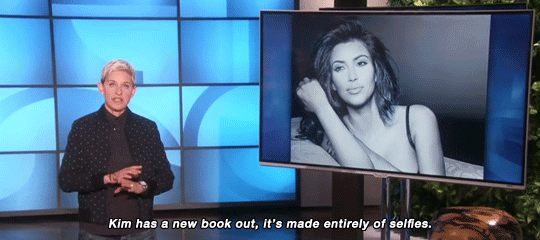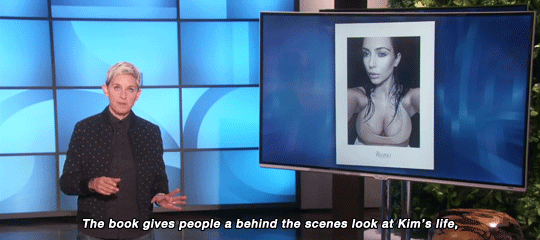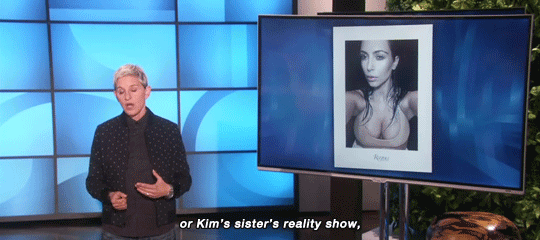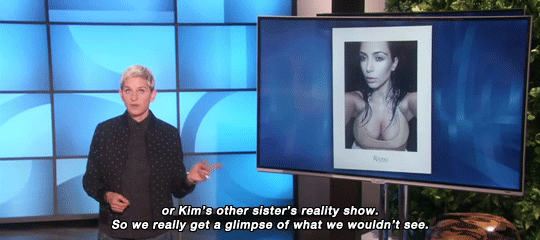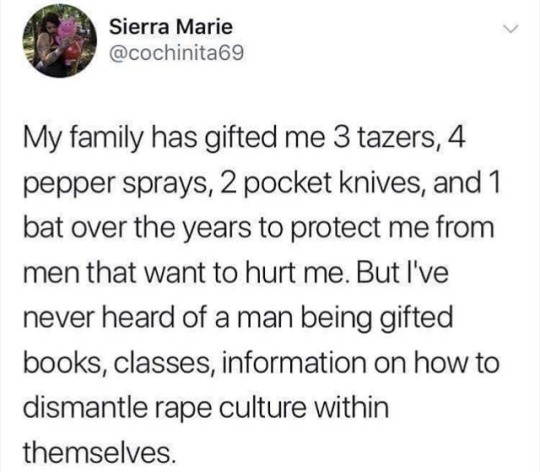Don't wanna be here? Send us removal request.
Photo
Celebrities who are socially conscious. Colin Kaepernick is a well know n American football player who has been criticized by US President Donald Trump by taking a knee during the national anthem at football games to protest the killing of black people by police.
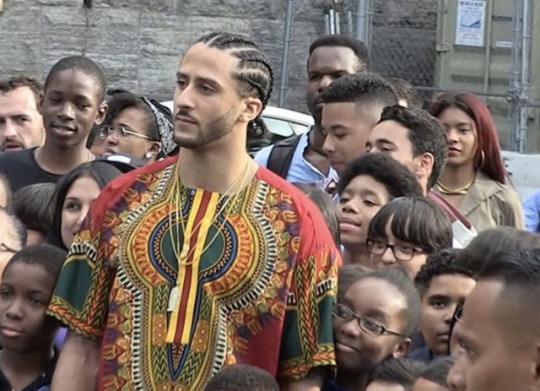
Stay WOKE, Kap. ✊🏾
6K notes
·
View notes
Text
Bibliography
Bibliography
Albury, K., 2015. Selfies, Sexts, and Sneaky Hats: Young People’s Understandings of Gendered Practises of Self-Representation. Internaional Journal of Communication, Volume 9, pp. 1734-1745.
Crocker, J. E. K. a. E. T., 2016. Selfies as interpersonal communication. In: Á. V. András Benedek, ed. In the Beginning was the Image: The Omnipresence of Pictures. s.l.:Peter Lang AG, pp. 132-137.
Faust, G., 2017. Hair, Blood and the Nipple Instagram Censorship and the Female Body. In: S. K. S. F. M. T. Urte Undine Frömming, ed. Digital Environments. s.l.:Transcript Verlag, pp. 160-171.
Goodnow, T., 2016. Chapter Title: The Selfie Moment: The Rhetorical Implications of Digital Self Portraiture. In: A. B. &. Á. Veszelszki, ed. In the Beginning was the Image: The Omnipresence of Pictures. s.l.:Peter Lang AG, pp. 124-130.
Gqola, P. D., 2007. Hate crimes against black lesbians', http://pumlagqola.wordpress.com/20O7/07/24/hate-crimes against-black-lesbians-2/,, s.l.: s.n.
Impey, L. D. a. A., 2010. African Jim : sound, politics, and pleasure in early 'black' South African cinema. Journal of African Cultural Studies, 22(1), pp. 57-73.
Msibi, T., 2009. Not crossing the line: Masculinities and homophobic violence in South Africa. Agenda: Empowering Women for Gender Equity, Volume 80, pp. 50-54.
Msibi, T., 2011. The Lies We Have Been Told: On (Homo) Sexuality in Africa. Africa Today, 58(1), pp. 55-77.
Posel, D., 2005. The scandal of manhood: "Baby Rape" and the politicization of sexual violence in post-apartheid South Africa. Culture Health and Sexuality, 7(3), pp. 239-252.
Sanger, N., 2010. The real problems need to be fixed first': Public discourses on sexuality and gender inSouth Africa. Agenda: Empowering Women for Gender Equity, Volume 82, pp. 114-125.
Scott, J., 1990. Domination and the arts of resist. London: Yale University Press.
Weiser, E., 2015. Me: Narcissism and its Facets as Predictors of Selfie-Posting Frequency. Personality and Individual Differences, Volume 86, pp. 477-481.
0 notes
Text
I Woke Up Like This
Digital media has brought with it a number of different ways in which people can express themselves. Representation in the media has been criticized because it has always seemed to favour particular demographics and has marginalized others or misrepresented them.
The culture of self-representation has been made easier with digital media because digital media allows a level of autonomy from the user. Selfies have become a quite common phenomenon that characterizes digital online spaces, specifically social networks.
Selfies are self-portraits, pictures that one takes themselves on their phone camera or a traditional camera (Katz & Crocker 2016). Selfies can be read as a cultural phenomenon that is specific to digital media because digital media has given people the platform to be a part of this culture and to share it with other people (Goodnow 2016). While selfies have been criticized as being narcissistic (Weiser 2015) and meaningless, they can be neither.
This approach to selfies will consider the ways in which selfies can have meaning not just to the selfie taker but to digital media itself. Posting selfies on social networks has brought up the conversation of the “gaze”, this is who controls the narrative over what is allowed to be posted on a social network such as Instagram and Twitter. Women are particularly stereotyped as being narcissistic when it comes to selfie culture and their selfies are more scrutinized by social networks than their male counterparts’ selfies (Faust 2017). This makes sense since most societies are patriarchal.
Women such as Petra Collins have had selfies where they are wearing bikinis with their pubic hair a bit visible removed on Instagram because they “did not follow community standards” (Faust 2017). It is interesting to note that community standards are essentially implying that the natural body of a woman is not desirable unless it is bikini waxed and clear of any natural hairs. This seeks to take away self-representation from women and essentially their autonomy in what they choose to show the world.
This kind of censorship is a reflection of the real-life censorship that many women face because of what femininity is supposed to look like and it sends a clear message that a women’s selfies are not supposed to be for self-gratification but once again, must exist for the prominent gaze; the male gaze (Faust 2017).
The self-expression and agency that selfies allow is unprecedented because taking selfies occurs in real time and is not as time consuming as other forms of self-expression are (Goodnow 2016). Selfies aid in establishing an identity, constructed for consumers of the selfie that one posts or for self-gratification. While selfies can be a commodity, they can also be a way for marginalized people to bring awareness to their social issues thereby making the selfie a political tool ((Iqani & Schroeder 2015).
They can be politically utilized by marginalized people making themselves visible in a society where they have been on the peripheral in contrast to the people who centre themselves. Self-representation is especially important for marginalized people because their narratives are always manipulated to fit a certain ideology and they are erased in the process. Self-representation gives them the opportunity to rewrite their futures and to claim their personhood for themselves and for upcoming generations to see a version that is not manipulated to their detriment.
The commodification of selfies is something that has unsurprisingly gained attention, unsurprising because of the capitalist system that most of the technological world exists in. If one looks at this theoretical framework of studying selfies, then it is also a self-serving narrative very intricately linked with narcissism and it is very gendered (Iqani & Schroeder 2015).
However, agency is still available to the selfie taker and they choose what kind of representation they want to do of themselves, they commodify and market their selfies as commodities to be consumed (Iqani & Schroeder 2015). In this way then, selfies can be said to follow and support ideological systems such as capitalism and the commodification and objectification of women’s bodies. Using this autonomy to produce and market a specific brand of how one wants to be seen by the public becomes self-marketing and self-branding (Iqani & Schroeder 2015). Celebrities such as Kim Kardashian West have used the prevalent culture of selfies to do just this.
Kim Kardashian West is a celebrity who is known for being a reality television star, a socialite model and a social media personality (Faust 2017). She has come to be well known for being a selfie enthusiast, more than most celebrities at least. In 2015, she released a coffee table photobook of over 400 of her selfies that was entitled Selfish (Faust 2017). The title of the book aptly played into the presumption that she is a narcissist because of the number of selfies that she posts across her social networks and her releasing a photobook entirely and only full pictures that she took herself was intentional (Faust 2017). While she has been criticized for this, it is also clear that she is practising her own agency as a human being that owns her personhood. The criticism might be biased because she is a woman who is fully in control of her own branding and however she chooses to commodify herself.
Selfies, like all digital phenomena are bound to face criticism, whether it is due to some kind of moral panic where it seems as though every person on social media has become a narcissist or is in mortal danger of becoming one. There is also bound to be criticism whether it seems as though people are gaining too much agency over how they choose to represent themselves when they have been represented for such a long time by people that they did not choose to represent them.
Selfies however, seem to be evolving with the progress of technology and digital media and this is something that does not need to be halted by moralists or gatekeepers of dominant ideologies.
0 notes
Photo
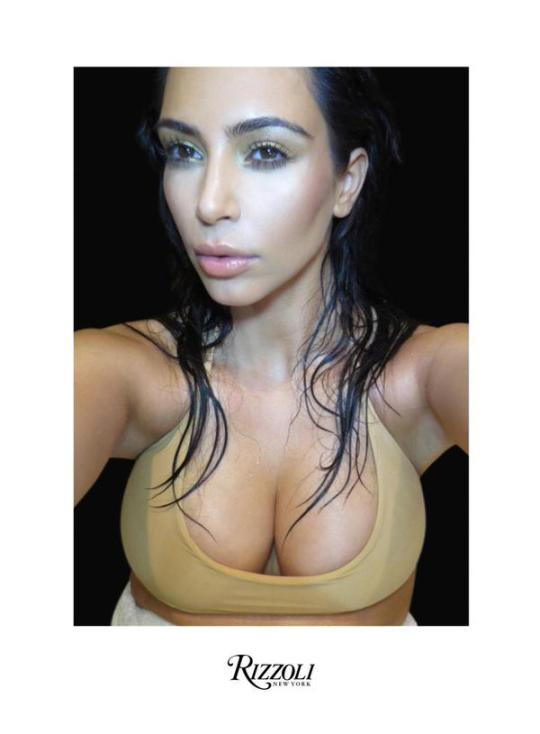
Kim Kardashian Unveils the Cover of Her Selfie Book ‘Selfish’
http://hypebeast.com/hb1k48o
2K notes
·
View notes
Text
Black Masculinity in South African Cultures
Visual media texts such as television are one of the most widely consumed forms of media around the world. Film making has become a study across different parts of the world because a number of people consume films and other forms of visual media such as television shows or series’.
South Africa is one of the countries where film has become a popular interest. Like other film industries around the world, the film industry in South Africa has been widely dominated by those who have the access to the tools needed to produce. Because of this, the ideologies that are distributed to the consumers can be very exclusionary and may only represent the dominant ideology instead of minorities.
Minorities in South Africa do not only apply to the population size but also to who has the access to control the narrative in film production. For example, during the apartheid government, the white population was a minority in size, but they were in control of all economic resources. Controlling the economy meant that they also controlled the means of production in every area including the film industry.
The first film that was produced with a black South African audience in mind was African Jim and it was released in 1949 (Dovey & Impey, 2010:58). The importance of the contextualization of a film according to the audience that consumes it is important when critically analysing the film because different audiences relate differently to the same media text. A particular audience can come across what Scott refers to as “hidden transcripts” (1990). These are subtexts that can only be recognized or understood by a specific group of people. The South African film Inxeba: The Wound can be read as having hidden transcripts.
The film was directed by John Trengove and released in 2017. It follows the gay Xhosa protagonist, Xolani, who decides to help initiate the boys of his village according to the isiXhosa custom referred to as ulwaluko where boys go to the mountains for a month, get circumcised and are taught the customary ways of what it means to be a man in the Xhosa tribe. Xolani’s job title is called ikhankatha which means that he mentors the boys on “how to become men”. Even before the film was released, it garnered a lot of negative publicity from black men, specifically Xhosa men. A number of them called the movie an offense to the Xhosa man and to his culture. They claimed that the movie showed “sacred traditional customs” of the cultural initiation process.
However, it soon became clear that this notion was unfounded as no one had seen the film, yet they had concluded that these sacred customs were being shown to the world without their permission. However, it soon became clear that the outcry was for a different reason altogether.
The film’s gay storyline was a very brave direction to move towards, even in 2017. Homophobia is very prevalent in South Africa with public figures being openly homophobic and citing it as upholding “tradition and values of African men” (Msibi 2009).
A highly patriarchal society, South Africans are as intolerant as they come. Lesbian women are raped and murdered simply for their sexual orientation every single day due to men feeling that they threaten the ideology of masculinity that says that all women desire men (Gqola 2007). Therefore, a film showing gay black men in a setting that is the epitome of Xhosa masculinity and a place where boys go to become men caused such an outrage amongst Xhosa men that the law had to intervene.
The outrage was not directed at supposed sacred customs being “exposed” however, it was directed at the threat that gay men imposed on the hyper masculinity of the tradition, it was a foreign concept that incited rage and violence (Posel 2005). It did not matter that the film was fiction because the media has reinforced the idea of a masculinity that does not include gay black men for a long time and this film was not conforming to that rhetoric but instead, introducing new masculinities (Sanger 2010).
The people who were against this film took to the digital space to voice out their concerns about how their culture was being disrespected. Xhosa men went to cinemas that were showing the film to protest and to try to shut the cinemas down. The cinemas shut down. The men threatened violence against the actors in the film, the protagonist, Nakhane Toure had his social media sites violated with threats of violence to the extent of murder. Xhosa men called him a sell out because as a Xhosa man, he should have known better. The fact that he is gay in real life only made the outrage even more violent. According to them, this was not something a gay man had any right to despite the fact that Nakhane had gone through initiation in real life too, just as they had. This is an acute example of men going as far as policing other men to conform to normative displays of masculinity in order to maintain their privilege as a collective (Msibi 2009).
Due to the overwhelming social media traffic that people against the movie caused that got Xhosa traditional leaders to pay attention to the film, the High Court ruled the film Inxeba: The Wound as hardcore porn due to a sex scene that would be overlooked had it been between people of the opposite sex. The producers of the film contested this until the decision was overruled and the film was allowed to go back to cinemas across the country.
This kind of censorship saw people watching the film online where it was available. The digital space had a platform for the film to still be seen even though it had been banned at cinemas.
17 notes
·
View notes
Photo
Kim Kardashian has been made the epitome of narcissistic selfie taking.
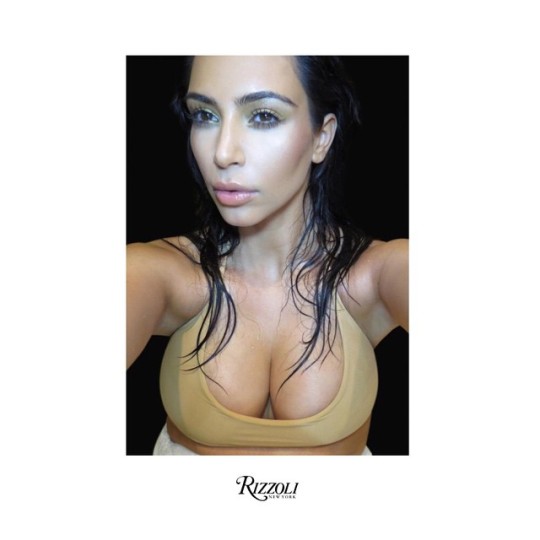
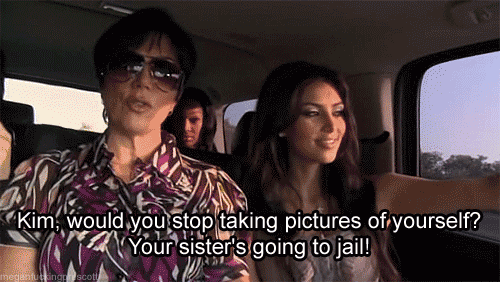
The cover to mommy’s book ‘Selfish’ has arrived. You should never judge a book by it’s cover, but this is pretty much it. Mommy shares over a decade of selfies that did not make it to Instagram. My favorite chapters are “No Filter”, “Bathroom Selfies” and “Khloe Goes To Jail”.
661 notes
·
View notes
Photo

Inxeba: The Wound was briefly banned from being shown at cinemas around the country following a ruling that it was “hardcore porn” after people who felt offended by the movie took to social media to share their outrage at the lack of censorship around the movie.
0 notes
Photo
Stills from the movie Inxeba: The Wound. The movie was said to be controversial because of the reaction it caused from mainly Xhosa men and Xhosa traditional leaders.
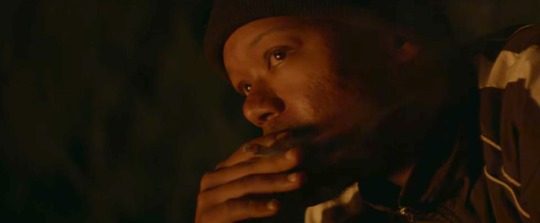
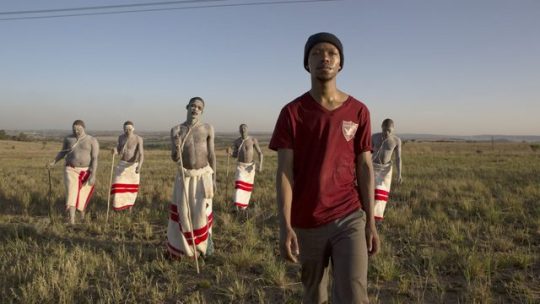
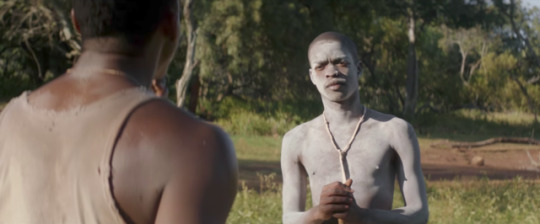
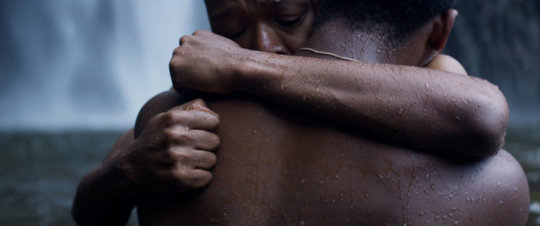

Inxeba / The Wound (2017) – dir. John Trengove
Country: South Africa Language: Xhosa
Underrated foreign films: ☞ 5/?
695 notes
·
View notes
Video
youtube
(via https://www.youtube.com/watch?v=0idwRX0d6nM)
The trailer for Inxeba: The Wound. A South African film entirely in the isiXhosa language. Released in 2017.
1 note
·
View note
Text
#StayWoke.
Globalization and development have seen different geographical locations connect in ways that they have never done before and this is because of advancements in technology. Technology has brought with it the “digital age” where people can connect effectively through the internet and many have used this interconnectedness to talk about social issues that affect them personally such as racism, homophobia, transphobia and sexism. Social consciousness has been around for as long as certain demographics have been oppressed by the dominant and online platforms have given people the platform to discuss their subjugation in much safer ways than standing in front of armed policemen with a placard in your hand.
Social movements such as #FeesMustFall, #MeToo and #BlackLivesMatters have all been propagated through digital media. These movements all relate to systematic oppression through racism and sexism. Digital media has made it easier to mobilize people who support these movements, even across different geographical locations. Social consciousness has seen a huge rise in digital media and it has come to be referred to as being “woke”. The term is a relatively new term that essentially means that a person is aware of systems of oppression that affect them personally or that affect others in one way or another. Being woke is being able to engage with intersecting systems of oppression in a critical way, questioning these systems and dismantling them (Ashlee et al). A particular demographic that has been enthusiastic about digital media has been women across different cultures and across race.
Social media has a love-hate relationship with woke people, especially women. They are sometimes mocked for not doing anything that makes a difference in their respective oppressed groups in real life and are accused of being woke just to garner attention from people. However, despite this, social media activism can have a positive impact and it is also easily accessible to mobilize online, creating an online public sphere than to mobilize in real time especially in situations where one’s life might be in danger.
Social media has given a lot of women the opportunity to voice out their opinions and their experiences. Feminism has been a long existing movement that has gained a lot of visibility along with the growing visibility of digital media. Twitter and other social media sites have a number of feminist accounts that are curated by feminist organizations. Individuals also have personal accounts where they talk about their feminism or wokeness. Feminists online are known to be the “wokest of the woke” because they are mostly radical feminists. Being woke can apply to black consciousness and feminism alike. However, wokeness requires a person to critically engage with all the systems of oppression that exist, not only personally but across different ways in which they relate to the world. For example, black men in movements such as #FeesMustFall were highly criticized by black radical feminists for being “fake woke”. This term applies to people who say they are woke or who are only woke when they are directly affected by an oppressive system. It may refer to a black man who is woke when it applies to racism for example but is still sexist, homophobic, transphobic and ableist. Intersectionality is a very important aspect of being a feminist because it acknowledges that while people experience different systems of oppression, all of these systems are essentially interlinked.
Social media can be used to bring attention to the injustices faced by women or black people because there are bound to be people who can relate to what one has experienced. Many incidents that show injustices being committed (especially by the powerful) have been recorded live and uploaded onto social media. Systems of oppression are criticized and there are consequences for upholding these systems. For example, in South Africa white people are not allowed to say the k-word as it is a racist term that was abolished after 1994 at the beginning of democracy. However, in recent years white people have been recorded saying the k-word and they have faced the consequences such as being fired from their jobs or even getting arrested. Social media makes it easy to share these types of things with the public that exists behind the screen, wokeness makes it affords a space for this and it ensures that lived experiences can be shared amongst people who share the same subjugation.
Social media has given women agency in taking control of the narrative of their lived experiences in contrast to other areas (such as television) where the discourse surrounding these experiences is still from the male gaze. Controlling the discourse of their lived experiences has been a process that has involved a number of social movements that speak to gender and at times, race as well.
Movements such as #MeToo that focus on gender based sexual assault in the Hollywood industry were supported on digital media with many women telling their stories and using the hashtag. The entertainment industry, particularly the film and television industry were shown to not be immune to the rape culture that exists around the world. Directors and actors who had sexually exploited women were named. Harvey Weinstein is the most recognizable name that had several women accuse him of sexual misconduct. This movement also brought into focus the lack of intersectionality that some woke people have. When black men such as R. Kelly, Bill Cosby and Morgan Freeman were accused of sexual misconduct it was rebuffed by some members of the black community as they felt that the men were being targeted because they were black. In this case, they were victimized instead of being held accountable for what they had done to women. This is a very familiar rhetoric when it comes to wokeness; being woke as long as your own privilege is protected does not require a lot of intellectual labour and is harmful to social progress, hence the term #checkyourprivilege
#feminism#metoo#digital activism#social activism#social media activism#check your privilege#political movements
0 notes
Photo
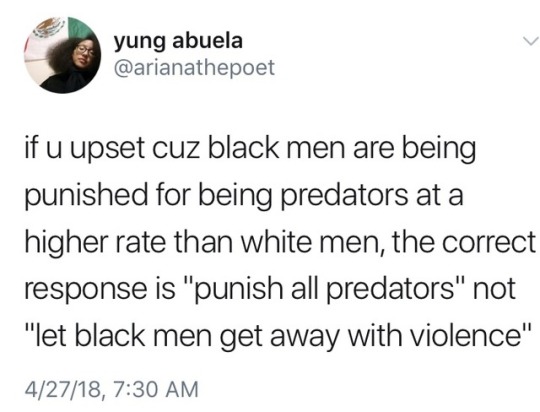
THANK YOU! This is exactly what Black Women mean when we discuss intersectional civil rights and the fact that a lot of people don’t actually want equality. They just want the same privileges as White Men and everyone knows in order for White People as a whole to have those privileges someone has to suffer.
Tweet By @ arianathepoet Reads: if u upset cuz black men are being punished for being predators at a higher rate than white men, the correct response is “punish all predators” not “let black men get away with violence”
15K notes
·
View notes
Quote
The women and men who have broken their silence span all races, all income classes, all occupations and virtually all corners of the globe. They might labor in California fields, or behind the front desk at New York City’s regal Plaza Hotel, or in the European Parliament. They’re part of a movement that has no formal name. But now they have a voice.
TIME names the #MeTooMovement Person of the Year for 2017 (via gentlekirk)
80 notes
·
View notes
Text
Being pro-black does NOT mean you are required to unconditionally support black people who have done terrible things
29K notes
·
View notes
Text
Ariana: gets insulted and groped by a pastor in a church on a memorial for one of her idols on live tv. Media: people are upset about how short her skirt was. All of us:
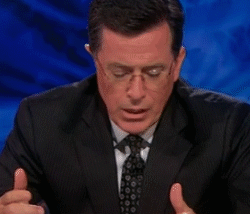
10K notes
·
View notes

